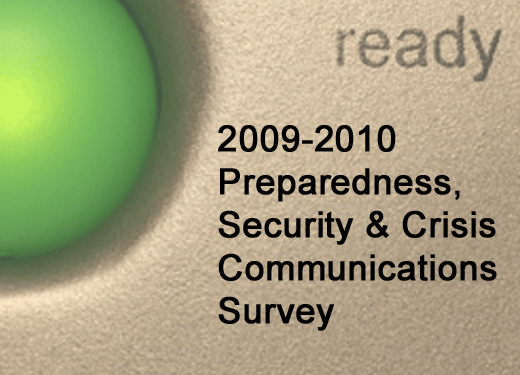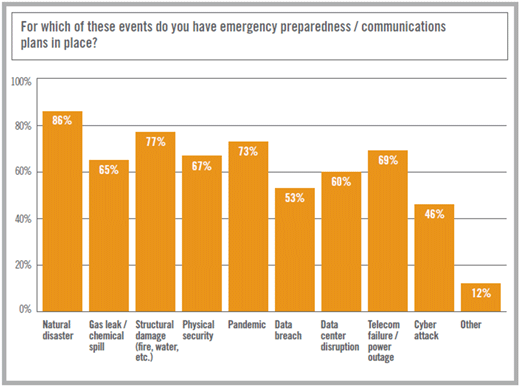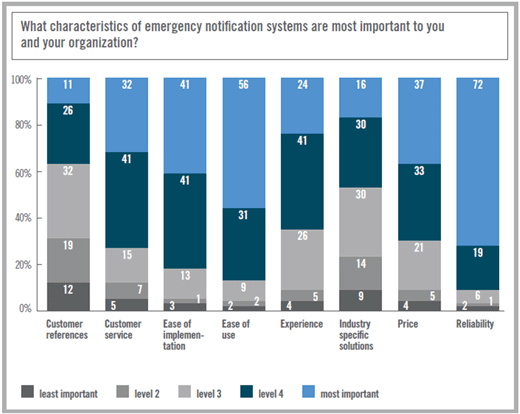CIOs and IT managers worth their salt are no doubt aware of the importance of planning for business continuity and regularly backing up business data. However, the exact nature of threats that SMBs are working to protect themselves against is likely to vary by organization. By polling 400 corporate executives and business continuity professionals nationwide, though, a recent study sponsored by Honeywell and Varolii Corp. attempts to shed light on the aspects of business continuity on which your peers could be focusing.
For example, the survey found that the number of people involved in disaster preparedness is relatively unchanged or growing when compared with 2008 figures. However, executive involvement in both planning and execution has risen significantly. Find out which threats are rated top-of-mind, and how executive buy-in affects the business’ crisis plan, among other data points, by viewing the slideshow and reading our Paul Mah’s post on how to compare these findings to the needs of your business.
Click through to see results from a recent study sponsored by Honeywell and Varolii Corp.
More than 70 percent of respondents have 25 or fewer people dedicated to emergency preparedness.
While preparedness plan execution is still primarily a Business Continuity and Disaster Recovery-centric responsibility, executive involvement is rising dramatically. This may signal that ensuring business resiliency is becoming a high priority for executive leadership.
Unlike the results of 2008, pandemic ranked as the top threat to organizations (in light of the H1N1 outbreak in 2009). This is the first time since the survey was held (in 2007) that IT and data threats were not ranked at the top.
Pandemic preparedness rose in prominence for the first time since 2007, while preparedness for a natural disaster and structural disaster remained unchanged from last year.
81 percent of the organizations surveyed have communications plans that target all employees, vs. only 57 percent in 2008, when communications plans targeted mainly first responders or crisis management teams. This may indicate a further evolution and sophistication in crisis communications planning – and possibly tools to carry out those communications.
Overwhelmingly, reliability is most important when it comes to emergency notification systems.
While phone or cell phone remains the most common method for communicatingwith staff in a crisis, text messaging is becoming more popular.
Portable devices, such as PDAs and smartphones, are emerging tools used for managing security and facilities incidents.
Most common tactics still revolve around fire alarms and dock locks.













